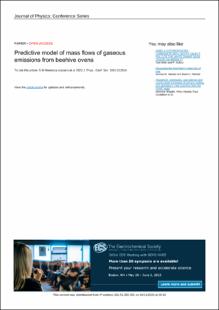Predictive model of mass flows of gaseous emissions from beehive ovens
...
mendoza lizcano, sonia maritza | 2021-08-09
One of the techniques used in the industry for the control of variables is, from their
magnitudes, such as fuel flow, air volume, amount of material mass, among others. The ceramic
industry needs to measure and control the polluting gases of its fixed sources in a less costly
way, based on tools that allow agility in decision making to mitigate the adverse effects, not only
to comply with a legal standard, but also for environmental and management commitment. The
objective of the research is to design a predictive model of the concentration of polluting gases
in the beehive ovens based on the results of the balance of matter and energy in the beehive
ovens. An exploratory descriptive methodology was used, where data on beehive ovens and
fourteen (14) continuous quantitative variables were considered through the statistical technique
of multiple regression to analyze the predictive behavior of the pollutant concentration variables.
As a result, the predictive capacity of the resulting model was high, explaining 79% of the total
variation of the variable. The multiple correlation coefficient of the complete model was 0.79.
During the analysis of the model assumptions, the Durbin Watson score reached a value of 1.971,
evidencing compliance with the assumption of independence of the errors.
LEER










